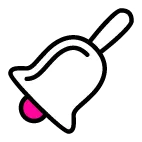Understanding and employing effective Enterprise Architecture (EA) is a cornerstone for organizational success in the rapidly evolving digital age. This comprehensive document guides IT professionals through the complexities and benefits of two major EA frameworks.
The document begins by tracing the development and importance of EA over time. It then dives into the definition and criticality of Enterprise Architecture Frameworks, critical tools for systematically addressing complex business structures and IT systems.
In particular, it focuses on two prominent EA frameworks: the first is a widely recognized and utilized EA framework known for its holistic, multidimensional approach. The second, a globally acknowledged framework by a leading consortium, is appreciated for its flexibility and inclusiveness, supporting business and IT alignment.
The document offers a deep dive into these frameworks, elucidating their components and how they can be leveraged to create a robust EA. The reference models incorporated in these frameworks are also explored for further understanding.
This indispensable resource gives IT professionals a thorough understanding of the following:
- The concept and significance of enterprise architecture
- The vital role enterprise architecture plays in organizational success
- The definition and importance of enterprise architecture frameworks
- Detailed insights into two key enterprise architecture frameworks
- Guidelines on how to implement these frameworks to design an effective enterprise architecture
A must-read for every IT professional, this document provides the insights required to select and implement an EA framework. It is a launchpad for superior strategic planning, business transformation, and innovation.
This document is a treasure trove of insights for CIOs and other IT leaders aiming to navigate the complex waters of Enterprise Architecture (EA). Here are a few ways how these learnings can be applied in real-world situations:
- Align Business and IT: CIOs can utilize the detailed insights from this document to create a common language between business and IT, promoting collaboration and shared understanding. By implementing EA frameworks, they can ensure that IT initiatives align seamlessly with business objectives, thus driving strategic value.
- Manage Complex Systems: EA frameworks provide a structured approach to managing IT systems and infrastructure complexity. The understanding gained from this document will empower CIOs to map out their IT landscape, enabling better decision-making regarding technology investments and architectural changes.
- Enhance Agility and Flexibility: In today's rapidly evolving digital landscape, the ability to respond quickly to changes is a business imperative. By applying EA frameworks, CIOs can design flexible and adaptable IT architectures that can easily accommodate market trends, technology, or business strategy shifts.
- Facilitate Innovation: With a robust EA, IT leaders can foster an environment conducive to innovation. They can identify gaps, redundancies, and opportunities in their IT landscape, thus paving the way for digital transformation and innovation.
- Improve Risk Management: Using EA frameworks, CIOs can gain a holistic view of the organization's IT architecture. This can help identify potential vulnerabilities and risks, allowing IT leaders to devise effective mitigation strategies.
- Guide IT Investments: Understanding EA frameworks can help CIOs make informed decisions regarding IT investments. They can prioritize initiatives that align with the business strategy and provide the most value, ensuring efficient use of resources.
The knowledge gained from this document can arm CIOs with the tools they need to overcome complex IT challenges, drive strategic value, and shape the digital future of their organization. This discussion will put into perspective the role of frameworks in enterprise architecture planning. MUST Read!


